Kitchen Tools For Every Cranny
by: fast company, 2011-06-29 17:22:16 UTC
Turn up the heat with these ultra-functional tools.
#wrapper .p {
float:left;
font-family:Arial, Helvetica, serif;
height:222px;
margin-right:23px;
margin-top:10px;
width:180px;
}
#wrapper p {
line-height:15px !important;
font-size:14px !important;
}
#wrapper p strong {
font-family:arial, helvitica;
}
#wrapper {
}
 OUTFITTING a kitchen used to be a simple task--pots, pans, and a handful of standard implements were the norm (unless you responded to infomercials).
OUTFITTING a kitchen used to be a simple task--pots, pans, and a handful of standard implements were the norm (unless you responded to infomercials).
Now, as design continues to infiltrate every corner of our lives, companies are rethinking the form and function of cooking tools, leaving consumers with an expanding range of products to tackle a kitchen's many obstacles. Can't flip fried foods without launching them out of the pan? There's a product for that. Trouble getting veggies from the cutting board to the bowl? There's a product for that too.
Armed with the right equipment, it's easier than ever to feel--and cook--like a culinary pro.
Chef'n Sleekstor Pinch+Pour bowls [1]
Thanks to the rubbery magic of thermoplastic elastomer, these seemingly round bowls form a spout when you pick them up and pinch, giving them the qualities of both mixing bowl and measuring cup. ($15, chefn.com)
Joseph Joseph Chop2Pot cutting board [2]
This polypropylene cutting board has flexible hinges that allow it to fold up into a scoop, guiding chopped ingredients into the pot rather than letting them spill onto the floor. ($15, josephjoseph.com)
Menu wine breather [3]
Like judging a book by its cover, we've all purchased a bottle of wine simply because of its beautiful label. This device does the work of a decanter and lets you keep the artwork on the table -- it aerates the grape, then funnels it back into the bottle. ($70, menu.as)
Alessi Shiba saucepan [4]
Sculpted by Japanese designer Naoto Fukasawa, the aluminum Shiba has a plump wooden handle, a polished steel finish, and a curved lip for pouring, promising smooth sailing at the stove. ($170, alessi.com)
Pottok Lines Forest recyclable wallpaper [5]
For Chinese cooking with a Dutch twist, try this wok from the Netherlands' Royal VKB. An oversize cupped lip helps you flip frying foods without shooting them out of the pan. ($150, royalvkb.com)
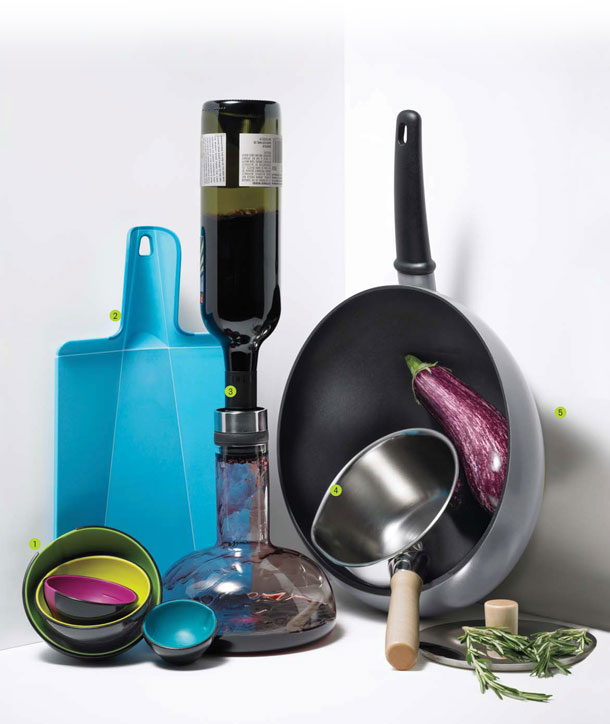
[Photograph by Kang Kim]
A version of this article appears in the July/August 2011 issue of Fast Company.


 Porous Aluminum Developed to Triple Li-ion Battery Capacity
Porous Aluminum Developed to Triple Li-ion Battery Capacity
by: Tech-On! : tech news - straight from Asia., 2011-06-28 05:52:00 UTC
Sumitomo Electric Industries Ltd has developed a porous aluminum called "Aluminum-Celmet."
The Designer as Social Entrepreneur (Part 2)
by: FEED STOP, 2011-06-24 13:00:00 UTC
This is the second in three installments of an in-depth look at the future of design education... the designer as social entrepreneur.
Communication Design students graduate from universities across North America annually most of the time well suited to enter into the workforce and compete in the nuanced world of clients and cubicles. (At least, this is how I feel I prepare my students.) However, as we've seen quite dramatically over the past three years that when the economy comes crashing down, so does the hopes of many young designers of finding full time studio employment. School prepares fledgling designers to [...]
Why Green Marketing Should Go Beyond Description by Omission
by: Greener Design, 2011-06-28 11:45:00 UTC
When companies only talk about what’s coming out of their products, should we worry about what is actually in the products?

 Janine Benyus Discusses Biomimicry
Janine Benyus Discusses Biomimicry
by: Environmental Leader, 2011-06-30 10:04:32 UTC

Janine Benyus discusses biomimicry at the Stockholm Dialogue, which was part of the 2011 Nobel Laureate Symposium on global sustainability.
 In.gredients Wants To Be The First Packaging And Waste-Free Grocery Store
In.gredients Wants To Be The First Packaging And Waste-Free Grocery Store
by: fast company, 2011-06-30 23:05:00 UTC
In an industry littered with excess packaging, it sounds like an impossible goal. And the Texas startup isn't just targeting waste, it's also going after food deserts, too.
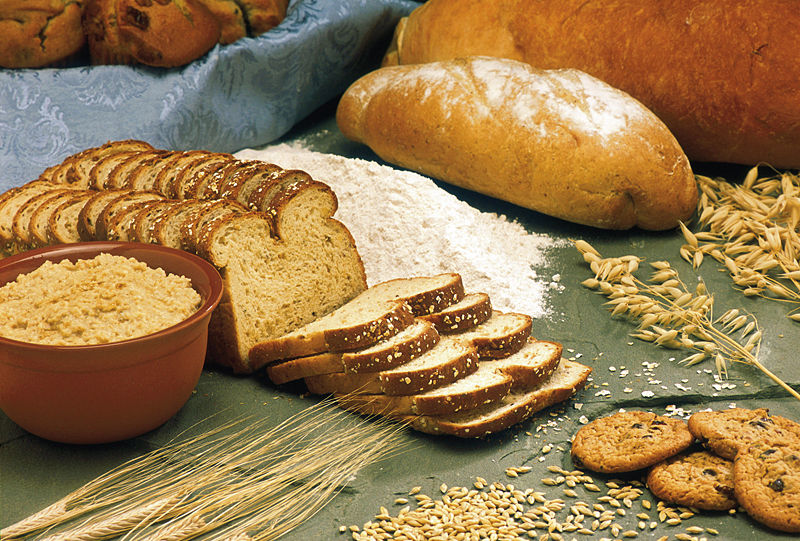
In an industry littered with excess packaging, it sounds like an impossible goal: in.gredients, a startup out of Austin, Texas, wants to create the first zero-waste, packaging-free grocery store in the U.S.. Can this ever work?
When it launches later this year, in.gredients won't be in competition with your local Safeway; it won't even offer the same selection. You'll be able to find produce, grains, baking supplies, oils, dairy, meat, beer, wine, and household cleaners--but no Twinkies, Doritos, or other unhealthy snack foods that could also be found at your local corner store. In.gredients claims that it will carry "all the basic ingredients you need for life (and most recipes)."
"Most
will perceive our competition as supermarkets, since we're literally
revising what grocery shopping looks like. But really, our competition
is hyper-consumerism, which is just not sustainable long-term," explains Brian Nunnery of in.gredients in an email to Fast Company. "If we were competing with supermarkets, we'd be setting
up shop across the street from one. Instead, we're targeting areas
where folks don't have easy access to good food--and are forced to buy
unhealthy food out of convenience.".
But here's the thing: it's often the eco-conscious consumers who live in areas with plentiful fresh food that bring their own bags to the grocery store. How is in.gredients going to convince its customers to do the same? The company will offer compostable packaging inside the store, but customers in food deserts may at first still be uncomfortable with the idea of bulk foods, which can be intimidating to the uninitiated (just try scooping and tagging those grains as fast as you can while impatient customers wait behind you).
The company also admits that it's not entirely free of packaging--items that require minimal protection for food safety reasons will get recyclable, compostable, or reusable packaging. "We
want to make good food accessible to our community," says Nunnery.
In any case, in.gredients may not actually the first packaging-free grocery store when it launches; Simply Bulk Market in Colorado already offers a packaging-free selection of bulk items. But in.gredients is open to franchising opportunities (and to food deserts), which means it could come to a city near you if it succeeds in Austin.
[Image: Wikimedia Commons]
Reach Ariel Schwartz via Twitter or email.


 The Good, the Bad and the Ugly: Off-grid energy
The Good, the Bad and the Ugly: Off-grid energy
by: Ecofriend, 2011-06-30 09:42:13 UTC
Ritu Mathur:

Off-grid energyIf you are an energy-savvy person, off-grid energy must be an interesting thing for you to have in your home
Our modern and fast-paced life is highly dependent on electricity. All through the day we continuously need energy for one reason or the other. We need electricity either for recreation, like watching television, listening to music or dancing, or for cooking using microwave, mixer, etc, or for commuting or for medical treatments or exercises in the gym, etc. In a nutshell, electricity has become a necessity in our lives. We can’t survive without electricity. At the same time, this high dependence also implies high bills and even higher dependency on other people or organizations who produce electricity and serve us. Many people have started exploring living with this dependence by producing their own electricity for fulfilling their requirements. The term off the grid means living in a self-sufficient manner without relying on public facilities. Generally, off-grid power comes from three sources – sun, wind and water. People choose to live off the grid either by opting one source for energy generation or two of them, as per the needs and budget.
In theory this seems to be a good idea wherein people tend to get independent for their energy requirements and they are not supposed to use non-renewable sources like fossil fuels, and these methods help in reducing carbon emissions, but there are both negatives and positives attached to this method. Let’s discuss them all here:
The Good:

Off-grid energy: GoodRenewable source of energy
Benefits of off-grid system:
- Off-grid systems are a real blessing in remote areas. In such areas, installing huge and heavy lines for supply of electricity can never be cost effective and is prone to malfunctions also. A standalone system can meet the energy requirements without making it very expensive for users.
- Many businesses now use off-grid power system for ensuring uninterrupted power supply and making their production efficient.
- Off-grid systems use energy from sun as in solar energy, from wind as in wind power and from water as in hydro power. These sources are renewable sources of energy and do not harm the environment as regular generation of electricity does by using coal. Use of coal for electricity is one of the main reasons behind global warming. Off-grid systems minimize that harmful effect.
- Off-grid systems function through solar panels which are installed on rooftops. These systems do not require any large or extra space in a home setting. They are space efficient.
- The PV technique which harnesses power of the sun can produce sufficient power, and even more than required, if solar panels are rightly placed.
- On the other hand, power generated by wind, known as Micro hydro off the grid power can produce enough power for oneself and the neighborhood, provided wind flow is appropriate and there is some extra space for installation of the sytem.
Can this be better?
Off the grid systems work efficiently only when the natural resources are in abundance. For proper functioning of hydro power there must be a stream in the vicinity with ample amount of water. The equipment too must be of right size according to the available resources. Too big or too small equipment will not produce optimum results. A turbine can work well even if it is installed a few kilometers away from the site of power consumption.
The Bad:

Off-grid energy: BadEnergy generation depends on location
Downside of off-grid system:
While there are many benefits of using off the grid systems, they always do not come without a few disadvantages. They have their own limitations and it is in best interest to know the benefits as well as limitations for the right choice of equipments.
Wind power:
- Wind power works well only when there is adequate speed and frequent wind flow. Without that the system doesn’t work and doesn’t produce cost-effective results.
- Wind turbines tend to create a lot of noise and hence are best for remote, secluded areas, where there are vast uninhabited stretches of land.
- Wind turbines are expensive and they require a sizable number of capital initially. Everyone cannot install them.
- It becomes very important to clean wind turbines on a regular basis because dust particles can affect a turbine’s performance.
Solar power:
Solar panels are expensive and are highly dependent on the amount of light received from sun. On a sunny day there may be adequate energy production but on long gloomy days there may be no power for days together. So only solar power cannot meet the requirements of the household. It needs to be used in combination with either off-grid systems or regular power supply, which is an expensive affair to begin with.
Can this be avoided?
All these problems can be avoided to a large extent if the method of off-grid system is adopted after understanding the requirements and the prerequisites for them. Besides, if the best quality equipments are used for them, functional problems can be avoided but at the same time the entire system gets expensive.
The Ugly:

Off-grid energy: UglyUgly part of the energy depends on the power-generation method
After discussing all the goodies about the off-grid system, now it is important to discuss their ugly side also. Though it is widely believed that off the grid system are environment friendly, the fact is that they can harm birds and wildlife to a certain extent. It is well known that wind turbines perturb migratory birds and now latest researches say that they can rip off the lungs of flying bats. While it is not documented but it is still evident that huge blades and turbines can seriously disturb local wildlife. The turbines also contribute to sound pollution as they create a lot of noise which is not good for a countryside.
Solar power-based off-grid systems demand constant monitoring and maintenance, not to mention the amount of water that is required by solar plants. Moreover, all this energy is stored in batteries, which need frequent replacements. Hydro power is not a feasible option everywhere. It is ruled out for cities and it is even more difficult to maintain the same output from them all through the year since in summers water tends to reduce from the streams and unless there is copious supply, this system does not work.


 Gordon Murray debuts the world's most efficient EV
Gordon Murray debuts the world's most efficient EV
by: Ecofriend, 2011-06-30 11:41:06 UTC
Samiran Banerjee:

T.27 Electric CarWorld’s most efficient EV
The very renowned car-designer who had designed McLaren F1, Prof. Gordon Murray, is back with another surprising creation: the T.27 city car, which is claimed to be the world’s most efficient electric car. He has been working on this project since a long time, and finally it has come out into the open.
Prof. Gordon Murray, has been very sincerely working on this project over the past three years. It has been his dream to make a electrically driven car ever since he unveiled McLaren F1 and finally he has materialized his dream. Although the car has been subject to some criticisms regarding its size, its size can rightly be described by the point that three T.27s can easily fit into a single parking space.
It can accommodate three people inside, including the driver and has a massive upwards-swinging door. The electric midget is a product of real innovation with a fully integrated electric motor, control system and battery design. It has a top speed of 60mph, which prevents it from being a super car, however the little vehicle leaves behind Mitsubishi’s i-Miev and the electric Smart Car with its efficiency.
It is 36% and 29% more efficient than i-Miev and Smart car respectively. It has the ability to reach 100 miles on its charge and possesses a 33-horsepower electric motor charged by lithium-ion batteries, and still manages to weigh 1500 lbs. Before launching the vehicle, it got tested under the strict Euro-NCAP safety standards and has been given ” First Class” recognition.
The T.27 is claimed to have a turning circle of just 9.7 feet and with its width of just 4.3 feet. The development program started in November of 2009 and the first running prototype was completed in April 2011. The final price of the car is yet to be determined.
Via: AutoGuide


 Dezeen Screen: Christien Meindertsma at My Way talks
Dezeen Screen: Christien Meindertsma at My Way talks
by: Dezeen, 2011-06-29 17:07:11 UTC
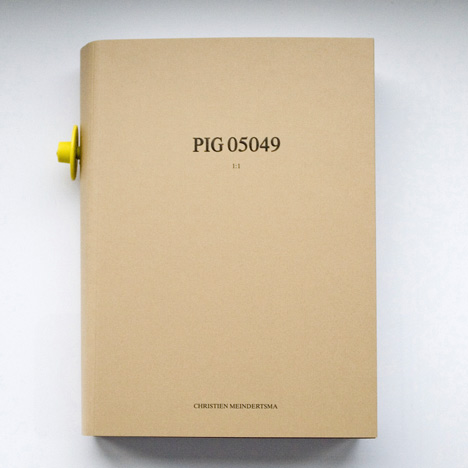
Dezeen Screen: in this movie Dezeen filmed at the Design Academy Eindhoven My Way talks in Milan, Dutch designer Christien Meindertsma talks about her book PIG 05049, in which she traced and catalogued all the products derived from a single animal. Watch the movie »


 Dezeen Screen: The Solar Sinter by Markus Kayser
Dezeen Screen: The Solar Sinter by Markus Kayser
by: Dezeen, 2011-06-30 10:25:24 UTC
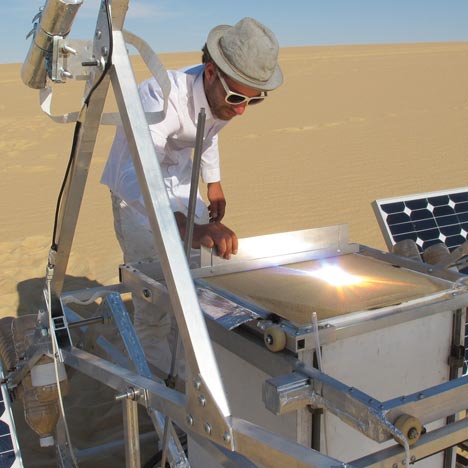
Dezeen Screen: this movie by Royal College of Art graduate Markus Kayser shows his Solar Sinter 3D-printing machine at work in the desert, making glass objects by melting sand with sunlight. Watch the movie »




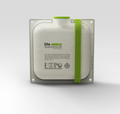

Comments by our Users
Be the first to write a comment for this item.